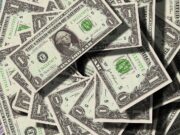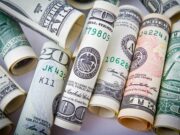Definition
Reaganomics is the term used to describe the economic policies advocated by former United States President Ronald Reagan throughout the 1980s. These policies are frequently connected with supply-side economics, which political opponents refer to as trickle-down economics or voodoo economics, and free-market economics, which political supporters refer to as free-market economics.
What is ‘Reaganomics’
When referring to the economic policies of Ronald Reagan, who served as the 40th President of the United States from 1981 to 1989, the term “Reaganomics” is commonly used to refer to the policies that called for widespread tax cuts, reduced social spending, increased military spending, and deregulation in domestic markets. President Gerald Ford instituted these economic measures in response to a lengthy period of economic stagflation that began in 1976 and continued until the election of President Barack Obama in 2008.
Explaining ‘Reaganomics’
Reaganomics was used by both supporters and opponents of Reagan’s policies to describe his economic policies. In part, Reaganomics was built on the ideas of supply-side economics and the trickle-down hypothesis of economic growth. These ideas contend that tax reductions, particularly for companies, are the most effective means of stimulating economic development.
With lower corporate spending comes the expectation that savings would “trickle down” to the rest of the economy, so stimulating economic development. The phrase “voodoo economics” was created by George H. Bush, who served as Vice President under President Ronald Reagan before becoming the president of the United States.
The Objectives of Reaganomics
Prior to the start of Reagan’s first term in office, the country had been through many years of “stagflation,” in which high inflation was coupled by high unemployment. Increasing the short-term interest rate, which was approaching its highest in 1981, was one of the Federal Reserve Board’s strategies for combating excessive inflation during that period.
For his economic strategy, Reagan suggested a four-pronged approach that was meant to cut inflation while simultaneously stimulating economic and job growth: Reducing government expenditure on domestic programs, lowering taxes on individuals, firms, and investments, reducing burdensome regulations on enterprises, and promoting slower money growth in the economy are all recommendations.
Reaganomics in Action
Although Reagan lowered domestic expenditure, this was more than offset by increases in military spending, resulting in a net deficit over the course of his two years in the White House. The top marginal tax rate on individual income was decreased from 70 percent to 28 percent, while the top marginal tax rate on corporation income was reduced from 48 percent to 34 percent.
In addition to eliminating price regulations on oil and natural gas, long-distance telephone services, and cable television, Reagan continued the deregulation of the economy that began under President Jimmy Carter. During his second term, Reagan backed a monetary strategy that helped to keep the value of the United States dollar stable in relation to other currencies.
Further Reading
- Where Reaganomics Works – www.jstor.org [PDF]
- What Everyone” Knows” About Reaganomics – search.proquest.com [PDF]
- The costs of Reaganomics – www.jstor.org [PDF]
- From Boumedienomics to Reaganomics: Algeria, OPEC, and the international struggle for economic equality – muse.jhu.edu [PDF]
- Reaganomics, Saving, and the Casino Effect – link.springer.com [PDF]
- After Reaganomics and Thatcherism, what? From Keynesian demand management via supply-side economics to corporate state planning and 1984 – www.jstor.org [PDF]
- The Conservative Critics of Reaganomics – search.proquest.com [PDF]

































